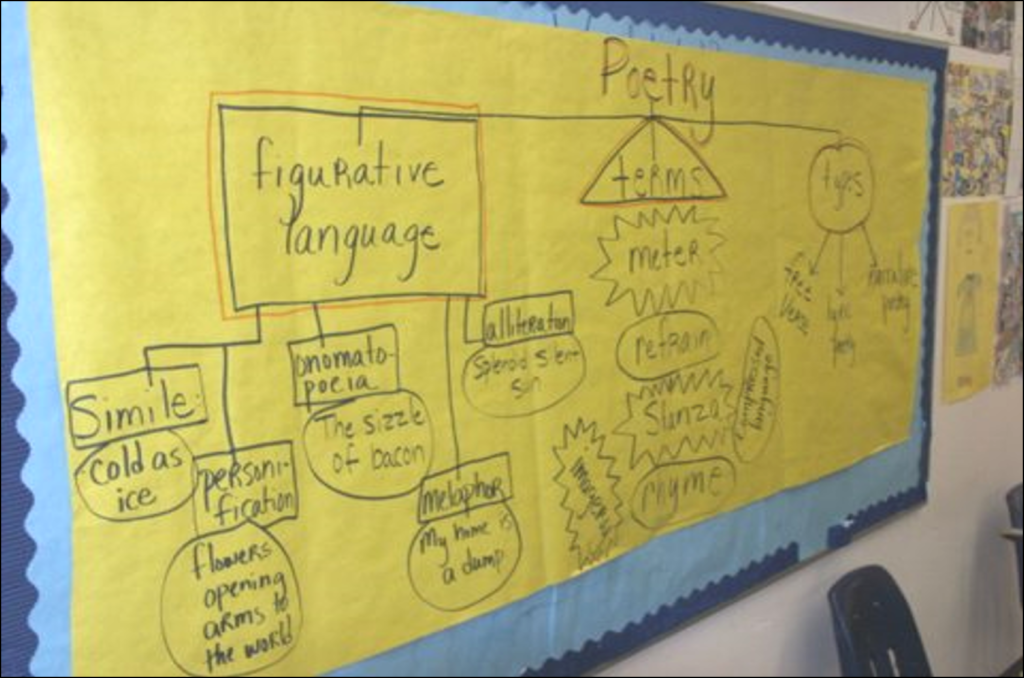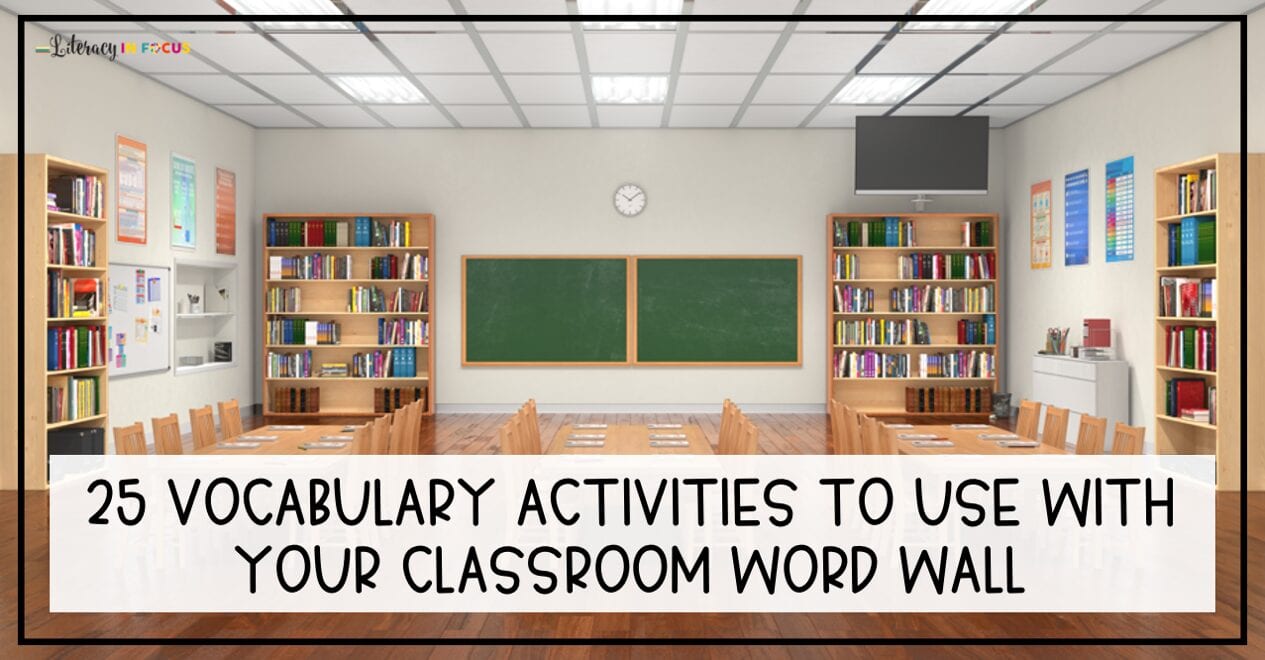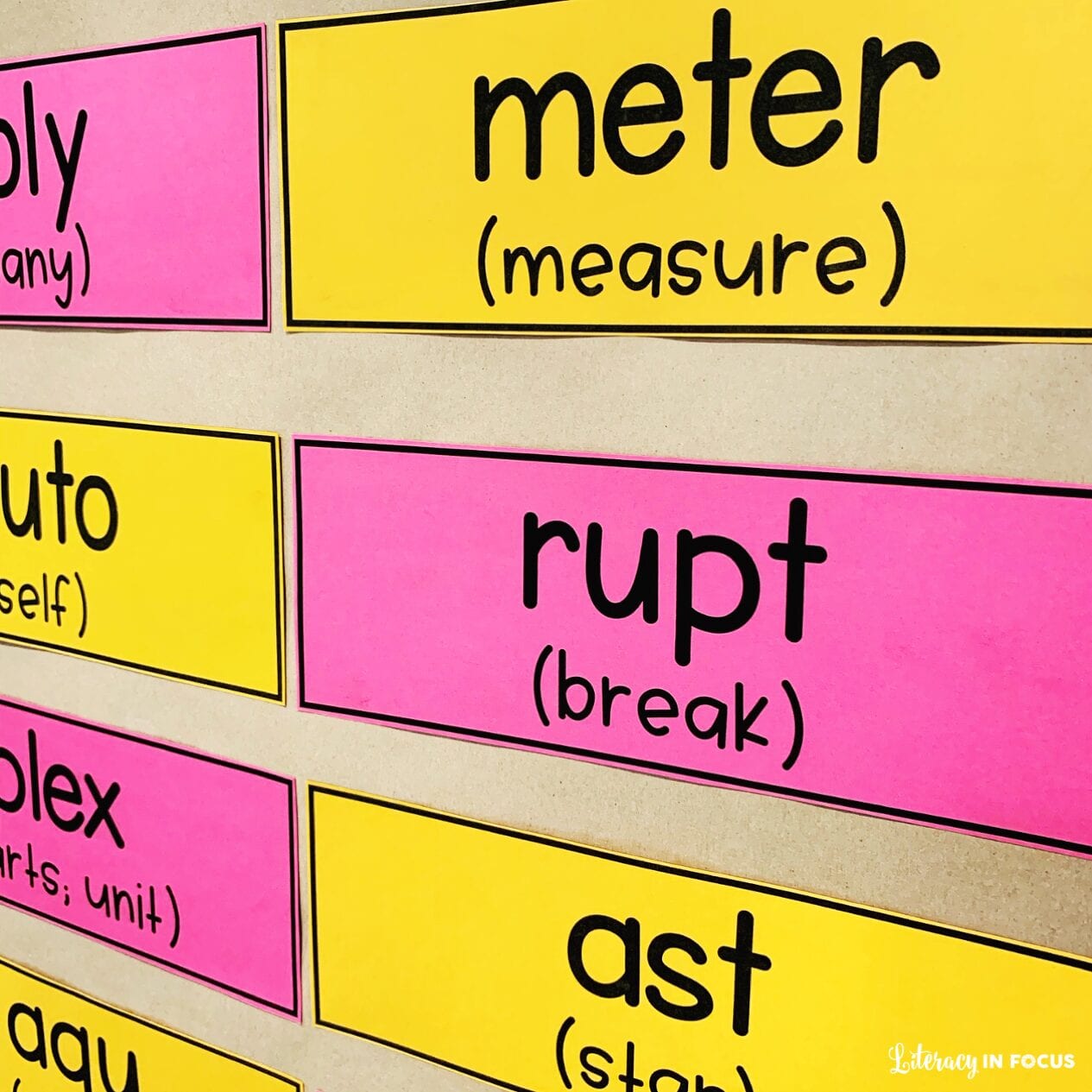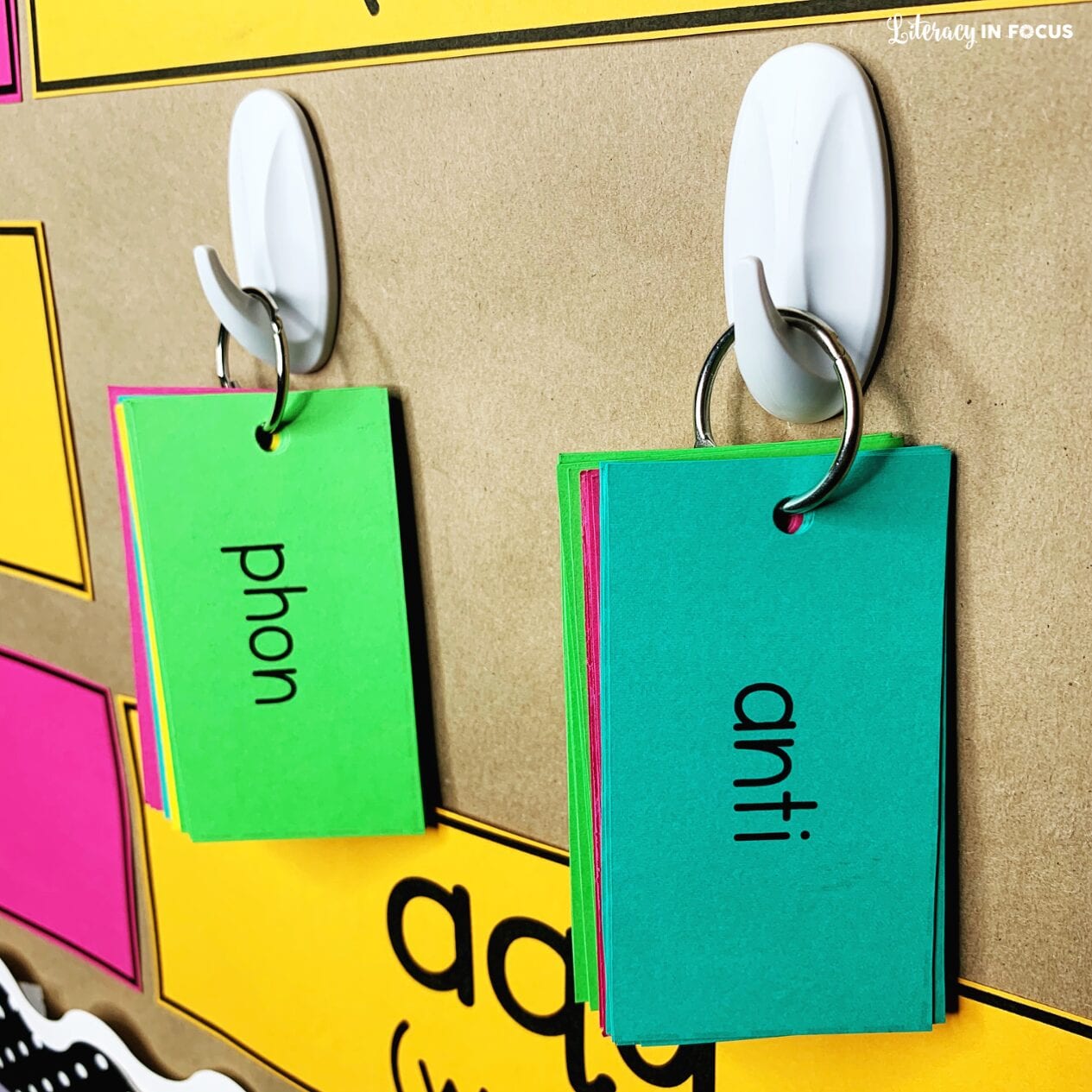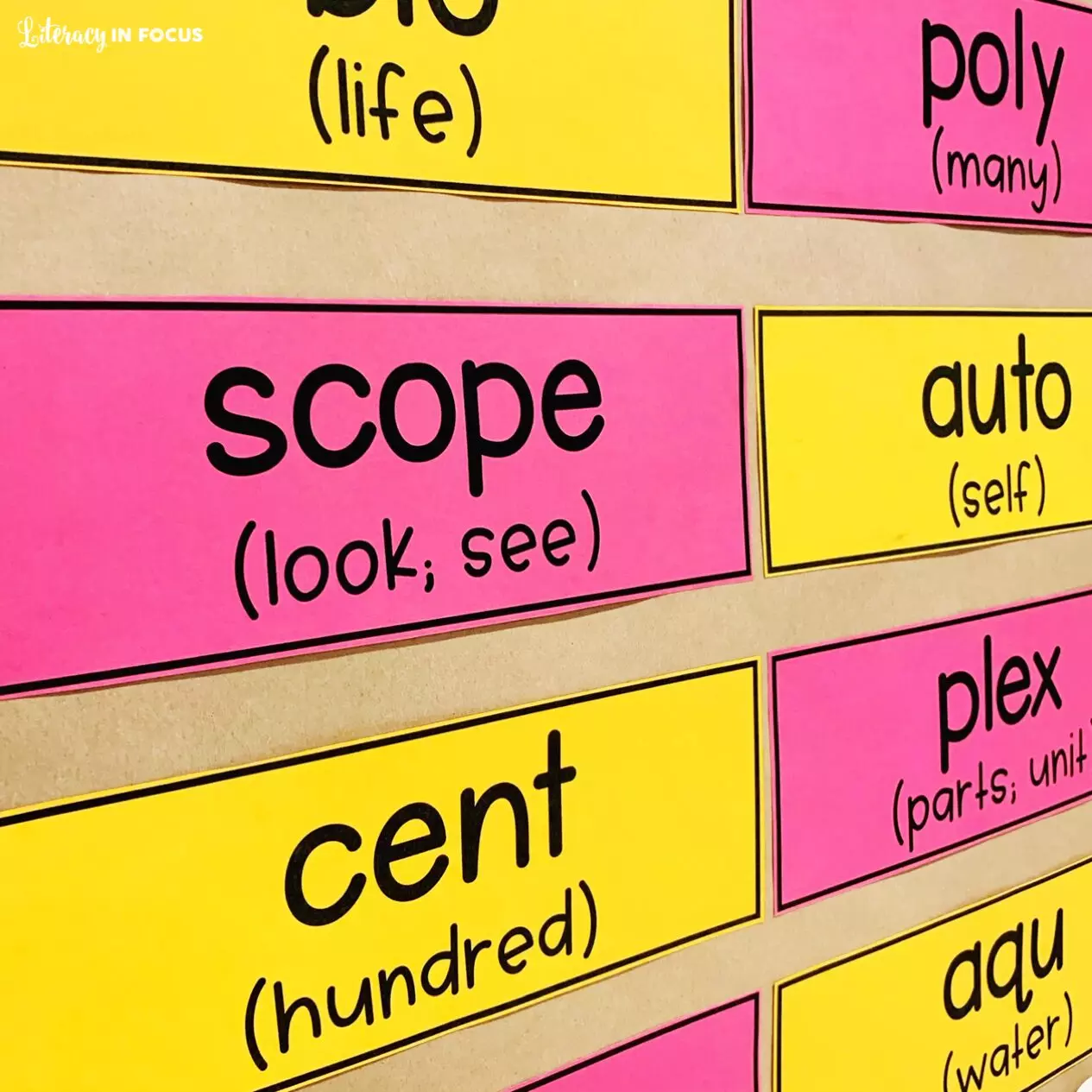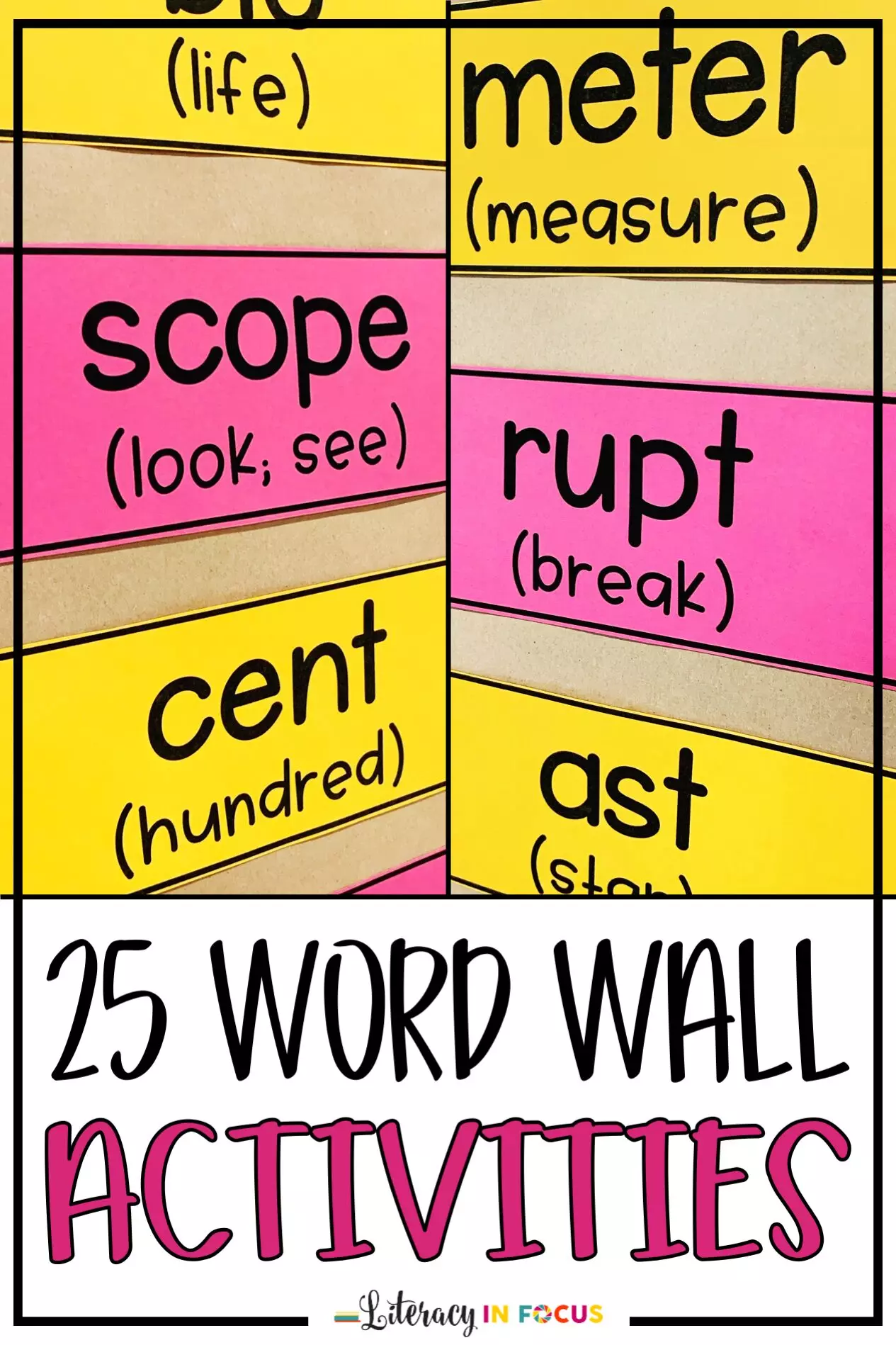 Words, words, words!
Words, words, words!
What words should students be taught?
One of the most frequent requests we receive is for a list of words that students should be taught in each grade level. The quick answer is that students should be taught a rich mixture of academic, content, and support vocabulary in every grade.
But what specific words should they be taught? That takes a little more explaining…
Sight Words
Most teachers and classrooms start out teaching the Dolch word list compiledby Edward William Dolch, a major proponent of beginning reading instruction. His list was prepared in 1936 and was originally published in his book Problems in Reading in 1948. (Some of the nouns he suggests are a bit outdated for today).
The Dolch word list provides teachers with 220 words and 95 nouns that students should learn from pre-school to Grade 3. And while that is a great start, research tells us that the full number of words students should know by grade 3 is closer to 20,000 (Anglin, 1993).
Academic Vocabulary
So, what other words are important for students? Well, in a classroom sense, academic vocabulary is important for students to know in order to be successful on tests and in the classroom. A sample of the types of academic words students should know for each grade (K-2) is listed below. These lists only lengthen and increase in difficulty as the grades ascend.
Kindergarten |
First Grade |
Second Grade |
| alphabet | author / illustrator | adjective |
| back cover / front cover | blends | composition |
| date | capitalization | conversation |
| drawing | chapter | dictionary |
| fairy tale | character | discussion |
| first name / last name | complete | everyday language |
| follow / give directions | comprehension | fiction |
| letter | consonants/consonant blends | folktale |
| letter – sound relationship | create | glossary |
| listening skill | describe | group discussion |
| number word | direction | guest speaker |
| picture book | fantasy | main character |
| picture dictionary | final | main idea |
| poem | illustrate | margin |
| initial | mental image | |
| retell | language | message |
| rhyme | magazine | nonfiction |
| sight word | order | noun |
| sign | predict | predictable book |
| speech | punctuation (basic) | prewriting |
| title/title page (introduction) | questions | pronoun |
| word | reality | publish |
| word families | syllable | purpose |
| symbol | reread | |
| upper case/lower case | spelling pattern | |
| vocabulary | table of contents | |
| vowel (long/short) | textbooks | |
| theater | ||
| verb (action word) |
Putting it All Together
But again, this academic word list does not get us to the requisite 20,000 words by 3rd grade, so DataWORKS compiled a list of words that teachers could use in the classroom. The basis of this list is Robert Marzano’s word list.
Marzano’s list is described as a list of “school” words since the words were specifically taken from actual textbooks and literature books school children commonly read. In addition, he compiled a second set of 17,000 words taken directly from common standardized tests.
Marzano’s combined list of book words and standardized test words came to 30,371 words. These words were then edited to select base words only and ended up as a manageable list of 6,768 words for K to 6th graders. These words were then matched back into the student textbooks and literature books to see in what grade students are exposed to each word in the list. In addition, each word was checked again against common standardized tests to determine in what grade students would come across each word in a standardized test.
DataWORKS has taken the Marzano list and merged in other common and high-frequency word lists from other sources such as Dolch to come up with a master list of words all students should know. DataWORKS also determined an appropriate grade level for each word. The grade level was derived by choosing the earlier grade in which each word occurs whether in books or on standardized tests. If students were to know these words at the proper grade level, they should have no trouble reading grade-appropriate literature books and textbooks and should also be able to do well on standardized tests. To view the DataWORKS word list by grade, click here.
Citations
Anglin (1993) from Wagovich and Newhoff; The Single Exposure: Partial Word Growth Through Reading; The American Journal of Speech-Language Pathology, November 2004.
What resources do you use for vocabulary instruction? Have you tried our list? Let us know in the comments section below.
Author: DataWORKS Curriculum
What is a Word Wall?
Word Walls are organized collections of words placed on a wall or other surface in the classroom. They are excellent tools for building word consciousness in students through increased vocabulary interaction and social learning opportunities; especially as students make connections among important concepts and big ideas. Interactive Word Walls, vocabulary notebooks, and periodic reviews are all important ways to revisit and reinforce vocabulary over time.
What does a Word Wall look like?
There are several different types of Word Walls which serve different purposes and focus on different skills. For example, it is common for primary classrooms to display high-frequency Word Walls, but it is unlikely to find such a Word Wall in a secondary classroom.
Word Walls in classrooms take on many forms. They can be color-coded by content area on index cards that are affixed to the wall. They can be on chart paper, a display board, or a concept map. No matter the way you choose to display Word Walls, the words on the Word Wall must be large enough that they can easily be seen by all students in the room from wherever they are seated.
Regardless of the structure, all grade levels should have content area Word Walls on display.
How are Word Walls organized?
How many Word Walls are in a room may depend on how the content areas are organized, whether high-frequency words or retired Word Walls are utilized, or how many courses are taught by a single teacher. For example:
- Elementary classrooms may have one Word Wall for various content areas, color-coded for each subject. Additionally, there may be a high-frequency Word Wall.
- In secondary classrooms, there may be separate Word Walls for each course, as well as specialized Word Walls, such as testing words.
How to Use a Word Wall in the Classroom?
Word Walls can be effective learning tools, or they can be wallpaper. Even the most organized Word Walls won’t help students learn words unless they are used. The words displayed on the Word Wall should be words that you currently want your students to use and should come down and get replaced by new words when a new lesson or unit is introduced. The same is true for high-frequency Word Walls.
Use the words on the Word Wall to create Advance Organizers (i.e. Student Learning Maps and Concept Maps) to meaningfully distinguish and highlight important vocabulary concepts (keywords), characteristics (descriptions or examples), and categories (“chunks” of learning connected to Learning Goals).
How do I retire words from the wall?
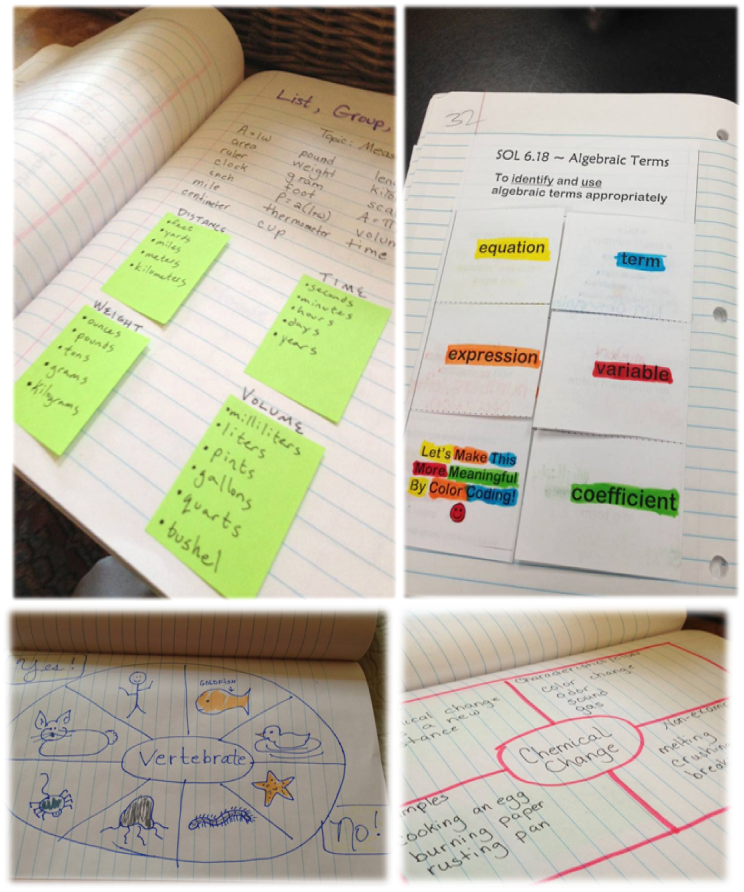
Once students are using the words appropriately, the words can come down. When words come down from the high frequency or content Word Walls, they can go to a retired Word Wall elsewhere in the room, or in an interactive vocabulary notebook. Students should use the interactive vocabulary notebooks daily for new word learning and can use them for structured review, writing, word games, and retired words. They are especially useful when learning word parts.

How do I use Word Walls during remote learning?
Virtual Word Walls apply the same characteristics as physical ones. They are most impactful when students know where to find the tool and are expected to use it for a purpose (i.e. writing, review, or as a scaffold for an assignment). Word wall ideas for remote learning are:
- Create a dedicated location in your classroom (or classroom website) to display vocabulary from the current lesson and unit.
- The size and color of fonts and virtual backgrounds are chosen to enhance visibility, not create “visual noise” that detracts from students’ ability to locate and see displayed words.
- Avoid busy patterns and small and light-colored fonts (i.e. yellow) to maximize displayed vocabulary.
- Use a digital “Word Wall” explicitly during a lesson as a scaffold for the assignment and to promote wordplay during Learning Activities.
- Provide a consistent and easily accessible “virtual” location to display current vocabulary that is used by both the teacher and students in lesson instruction.
More Word Wall Ideas for Virtual Classrooms
- Create a Concept as an editable (or fillable) PDF.
- Try Google Jamboards, Milanote, Miro, or MindMup to virtually create and manipulate concept maps and other word clusters.
- Dedicate a space on the main home page of your Google Classroom (or another LMS platform). Create a separate page for words as they are archived.
- Flip your Word Wall activity to create a super-effective previewing strategy! Create an Advance Organizer for a unit (i.e. Student Learning Map) or a lesson (i.e. Concept Map) and use it to activate students’ thinking prior to the start of a lesson.
- Use virtual games for wordplay to provide students with multiple opportunities to interact with the words, and as periodic review to improve students’ storage and retrieval of word meanings.
Interactive Word Wall Activities and Games
Primary: LINGO
- Ask students to vote for words prior to the game. Digital Adaptation: Try dotstorming for easy card voting.
- Provide students with a blank LINGO grid (may be a downloadable form or sent home as a part of a packet).
- Students will practice writing each word anywhere they choose on the grid.
- Shuffle index cards with the words and call the words one at a time.
- Have students chant the spelling of each word and then cover it with an object. (Try Lima Beans as students may not be too tempted to eat them!).
- The first student to have a complete row covered wins LINGO.
- Students can clear their sheets and play again.
Intermediate: Scrabble Scramble
- Digital Adaptation: Use Google Jamboards to create whiteboard spaces for your students.
- Each whiteboard should have digital “Post-It” notes for each letter of the alphabet. Some letters may need to be duplicated.
- On the first whiteboard, show students a scrambled up word from the concept map or one of your vocabulary clusters.
- Give the definition of the word or create a story passage about the word.
- Students take turns unscrambling the words, that is, moving the letters until they correctly form the word.
- Check students’ thinking by viewing everyone’s Google Jamboard by viewing the expanded frame at the top.
- Unscramble your word on the first whiteboard to show students the correct answer.
Secondary: Possible Sentences
- Give students a word bank of words to choose from, and ask them to use some of the words to create possible sentences, predicting what will be learned that day.
- The teacher displays and discusses the meanings of six new words critical to the lesson.
- persecution / famine / scarcity / prosperity / migration / exodus
- The teacher adds four related words that are familiar to most students to the above list.
- homelands / agriculture / survival / poverty
- Students work in collaborative pairs to look for words that are connected and create sentences before reading the text.
- Digital Adaptation: Try it with Padlet. The board can be organized as columns to cluster words and provide a place for the students to post their Possible Sentences.
Want more ideas on how to redesign your current vocabulary activities and strategies for your physical and virtual Word Walls? Join us for our upcoming Effective Vocabulary Instruction Training of Trainers Virtual Institute. Contact us today for a quote.
10000+ результатов для ‘classroom words’
Classroom instructions
Сопоставить
от Joy19374
beginner
Adults
English
Classroom language
Starters Classroom words
Анаграмма
от Altigrinova
starters
Kids Box 2
Halloween
Викторина
от Abcstudioenglish1
Words
Halloween «to be»
Викторина
от Abcstudioenglish1
Words
Toys
Анаграмма
от Abcstudioenglish1
Words
ordinal numbers
Флэш-карты
от Abcstudioenglish1
Words
Classroom words Quiz
Викторина
от Dvigantseva
Classroom words
Викторина
от Lerusik768
Classroom words Quiz
Викторина
от Dvigantseva
Classroom words
Сопоставить
от Dvigantseva
Classroom Words
Случайное колесо
от Rembira
Classroom words Find the match
Найди пару
от Dvigantseva
Easter ABC-STUDIO
Викторина
от Abcstudioenglish1
Words
School Subjects
Анаграмма
от Abcstudioenglish1
Words
Classroom commands+ /Kids box Starter/
Викторина
от Englishuniverse00
classroom commands
FF 4 unit 3
Найди пару
от Abcstudioenglish1
Words
Project 1 Unit 1B classroom
Сопоставить
от Cshabatina
classroom
objects
FF 3 unit 3
Сбить воздушный шар
от Abcstudioenglish1
Words
FF 5 Unit1
Найди пару
от Abcstudioenglish1
Words
ROOMS
Найди пару
от Abcstudioenglish1
Words
Project 1 Unit 1 B In the classroom
Случайные карты
от Cshabatina
classroom
objects
ROOMS Anagram
Анаграмма
от Abcstudioenglish1
Words
Actions
Случайные карты
от Abcstudioenglish1
Words
Stationary
Случайное колесо
от Abcstudioenglish1
Words
Drinks
Анаграмма
от Abcstudioenglish1
Words
verbs
Откройте поле
от Mpalschicova
4-й класс
English
words
Match up
Сопоставить
от Nadezhdabessonova
words
irregular verbs 1
Викторина
от Annatkachik2002
7-й класс
8 класс
9-й класс
Средняя школа
English
words
цифры
Откройте поле
от Mpalschicova
5-й класс
English
words
ROOMS Balloon pop
Сбить воздушный шар
от Abcstudioenglish1
Words
Words Amnesia
Случайные карты
от Abcstudioenglish1
Words
.
Сопоставить
от Mpalschicova
5-й класс
English
words
EF Beg Classroom words quiz
Викторина
от Lizabruin298
Classroom words Quiz Show
Викторина «Игровое шоу»
от Dvigantseva
1-20
Найди пару
от Abcstudioenglish1
Words
Classroom language — Quiz Level 1
Откройте поле
от Englishlab
5-8
English
Classroom
Categorize
Классификация
от Nadezhdabessonova
words
Starters Classroom words
Викторина
от Malpo
DL Classroom words
Флэш-карты
от Elizethereal
Starters Classroom words
Поиск слов
от Malpo
4.1 Classroom words
Сопоставить
от Marusya16sib
4.1 Classroom words
Случайные карты
от Marusya16sib
AS3 U1 L1 School subjects
Анаграмма
от Marinavserova1
AS3 U1
Classroom Expressions
Classroom words quiz
Викторина «Игровое шоу»
от Kostinalarisa19
2-й класс
English
Starters Classroom words
Викторина
от Frisberg
ML2. U2. classroom words
Диаграмма с метками
от Margarita28
7-9
2-й класс
3 класс
English
Starters
4.1 Classroom words
Поиск слов
от Marusya16sib
Drinks
Найди пару
от Abcstudioenglish1
Words
FF 2 UNIT 7 Anagram
Анаграмма
от Abcstudioenglish1
Words
Future Simple
Привести в порядок
от Juliadron1987
Начальная школа / начальная
Future Simple
Have/have not got + lunchbox vocabulary
Привести в порядок
от Openpeople
Family and friends 1 Unit 9 Lunchtime
AS2 Reading Unit 3
Привести в порядок
от Ladameenrose
Academy Stars 2
Have/ has
Привести в порядок
от Abcstudioenglish1
have/has
AS3 U1 L6 Classroom expressions Anagram
Анаграмма
от Marinavserova1
AS3 U1
Classroom Expressions
Classroom English
Викторина
от Grmteacher
Engelska
English
classroom language 1
Анаграмма
от Maiborodaed
classroom language
Spotlight 5
Classroom
Диаграмма с метками
от Kira23karp
Engelska
English
Classroom
Найди пару
от Elenacostner
Classroom
Совпадающие пары
от Coeurvaincu
A1
Power Up 1
Classroom
Анаграмма
от Avershina
You’ve created, printed, and hung your beautiful new word wall. Now what? You’ve spent a ton of time researching and compiling words for your word wall, and you don’t want it to become a passive reference point, fading into the background of daily instruction. Sound familiar? The activities listed below will help you to transform your word wall into an interactive tool for students to utilize on a regular basis.
KWL Chart
Most of the words that make up your classroom word wall will be new to your students, but there is a chance that a few will be familiar. Completing an individual KWL chart when the word wall is first introduced will give you an idea of how much students know about each word. It will also allow students to track their vocabulary knowledge as the unit or chapter progresses. First, instruct students to split their paper into three columns: Know, Want to Know, and Learned. Next, have students sort the word wall words into the “Know” and “Want to Know” columns. As you progress through the unit or chapter of study, students should be able to move words from the “Want to Know” column to the “Learned” column.
Story Time
Students write a story using all (or a set number) of words from the word wall. This activity works well because students need to have a clear understanding of each word’s meaning before effectively including it in their narrative. Also, dramatizing the words will assist students in remembering the individual word meanings.
Word Categories
Students sort the words from the word wall into categories. In order to allow students to form their own sorting patterns, categories are not predetermined. Similar to the use of a graphic organizer, sorting the words into categories will allow students to clarify patterns and relationships between words.
I Have, Who Has
Playing I Have, Who Has with students requires some prep work on your part, but the pay-off is worth it. Before playing the game, write each word and definition (separately) on a card to pass out to students. In other words, you will give each student a word card and a definition card. The format for creating the word and definition cards is up to you. To start game play, pass out a word card and definition card to each student. Once all of the cards have been passed out, the game begins. Choose a student to read the first definition in the following format, “Who has (insert definition)?” The student who has the word for that definition responds with, “I have (insert word). Who has (insert definition).” Game play continues until all words and definitions have been read.
Word Art
Students create a visual representation of each word. Connecting each term with a picture reinforces word recognition and recall. Plus, this activity appeals to multiple learning styles, and it’s easy to differentiate.
Word Wall BINGO
In order to play Word Wall BINGO, each student will need a game board that includes words from the word wall. When you read a definition, students mark off the corresponding word. In order to ensure that you have one winner, make sure all of your word wall BINGO cards are different. Not all cards need to include all of the word wall words. In fact, it’s more challenging for students if the cards don’t include all of the words from the word wall.
ABC Order
Placing the words in alphabetical order will give students practice with the spelling of each word. Ideally, a majority of the words on the word wall will be fairly new to students. Learning to spell new words is an integral part of the vocabulary acquisition process.
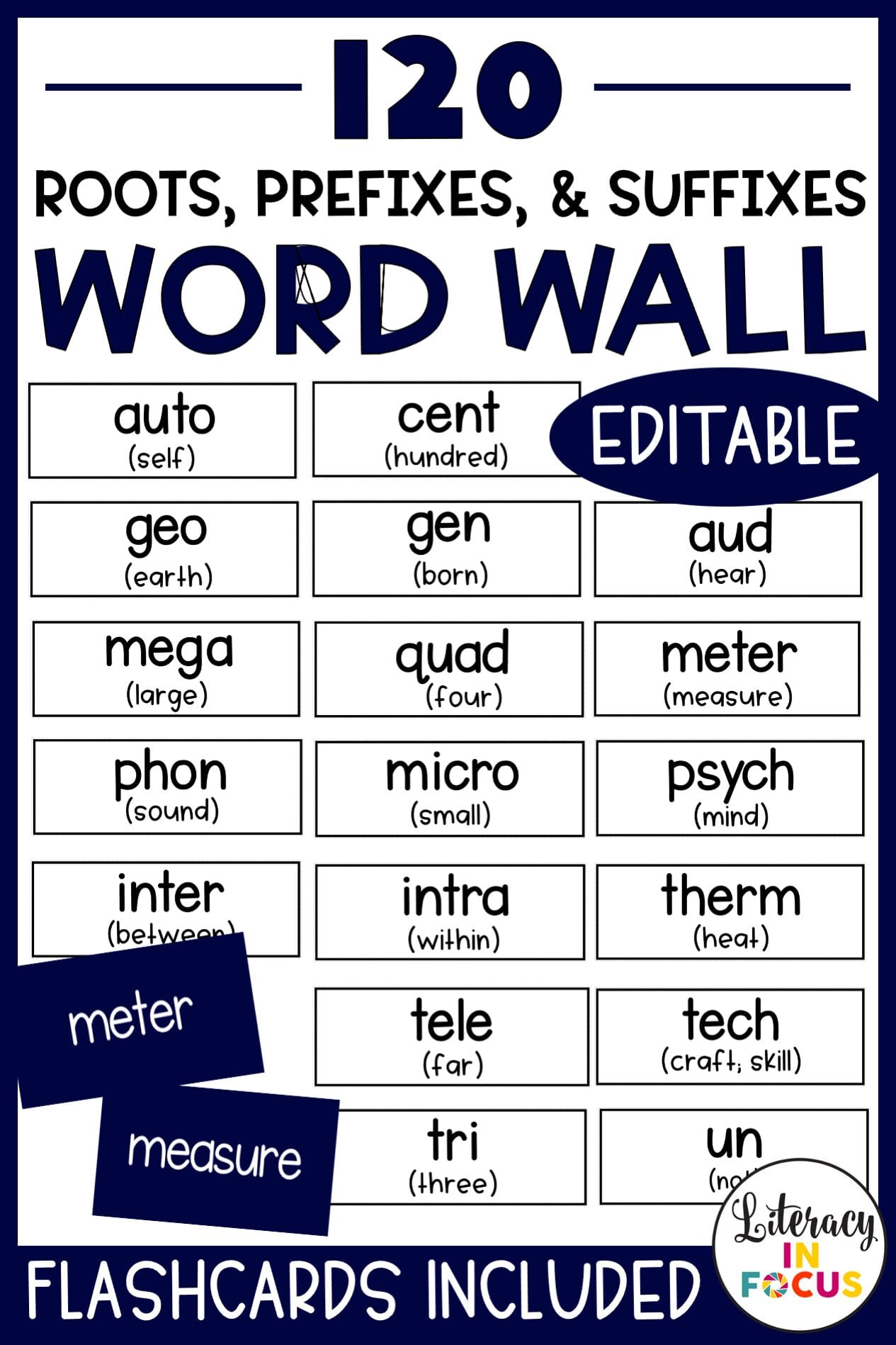
Parts of Speech Sort
Reinforce grammar skills with a parts of speech sorting activity. Students sort each word from the wall according to its part of speech. If students are still learning the different parts of speech, you can provide them with a dictionary to check their work. This is a great activity for reviewing the use and function of the eight parts of speech.
Spelling Bee
Hosting a classroom spelling bee is another activity that will reinforce the correct spelling of each word on the word wall. Splitting the class into teams and making it a friendly competition will increase engagement and participation. If students are not comfortable speaking in front of the class, or if you don’t want to put students on the spot, you can transform the spelling bee into an oral spelling test.
Mind Reader
The essence of this game is for students to guess the word based on a series of verbal clues. In order to teach students how to play, start off by giving them clues and let them be the mind readers. After students have a clear understanding of the game, they can play on their own in pairs or teams. Sticking to a set number of clues for each word adds urgency and avoids boredom.
Sentences
Keep it simple, and require students to use each word in a sentence. Placing the words in context creates relevance and cements meaning, making it an ideal practice activity for learning new words.
Matchmaking
The open-ended and creative nature of the matchmaking activity makes it a favorite for students. Essentially, there is never a wrong answer. Working in pairs, students make authentic connections between two words from the word wall. Building associations between words reinforces meaning and gives students a chance to work with each word in a low-stakes environment. You can assign word combinations or let students choose on their own.
Flashcards
Students create a set of flashcards for all the words on the word wall. The physical act of writing out each word and its definition will reinforce understanding and recognition. Plus, the flashcards can be used as a future study aid.
Fill-In-The-Blank
Similar to sentence writing, the fill-in-the-blank activity requires students to place each word in context. Write a sentence that includes each word from the wall, but insert a blank space where the word should be. It is the job of the students to figure out which word goes with each sentence. This activity is extremely versatile. You can create a worksheet of fill-in-the-blank sentences, or write the sentences on the board. Identifying the words in context, rather than in isolation, is important because it provides students with a strong frame of reference for understanding and integration.
Synonyms and Antonyms
Finding synonyms and antonyms is a common activity for learning new words. Extend the activity with a lesson on word choice, connotation, or shades of meaning.
20 Questions
Pick one word from the word wall, but don’t reveal which one. In order to guess the word, students are permitted to ask twenty yes or no questions. Based on answers to the yes or no questions, students try to determine the correct word. After learning how to play, you can break the class into pairs to play on their own.
Word Search
Most students enjoy completing a word search. Throw in a highlighter, and it’s even more fun. You can create your own word search puzzle, or use an online word search generator. I prefer to use the word search generator from A to Z Teacher Tools because it gives the option for including only forward facing words.
Charades
Make learning fun with a game of vocabulary charades. First, place students into teams. Next, call on a volunteer to act out the word from the list of word wall words. Teams can only shout out three guesses. The team that guesses correctly, earns a point. Game play continues in this fashion until all words have been played, or time runs out.
Hangman
Hangman can be played as a class or in pairs. In order to make the game more challenging, cover up the word wall during game play. If your students are not familiar with how to play hangman, click here to show them a short explainer video.
Flyswatter Splat
Another students favorite, flyswatter splat reinforces word meaning with engaging game play. First, list (or project) all words from the word wall on the board. Next, split students into two teams, and select a student from each team to be the first “splatter”. “Splatters” stand next to the list of words on the board. The game begins when you read a definition of one of the word wall words. The first student to “splat” the correct word with the fly swatter earns a point for their team. Game play continues until all definitions have been read.
Acrostic Poems
In order to complete this poetry activity with your students, assign a word from the word wall to each student. Have students write the word vertically on a piece of paper. Each letter of the word will start a line to their poem. The poem must be reflective of the word’s meaning. Lines can be made up of single words or phrases, and rhyming is not necessary.
Matching
Students match each word with its correct definition. Depending on existing knowledge of the words, students may need to use a dictionary to check their work.
Around the World
Around the World is another game that gets students up and out of their seats. A detailed explanation of the game can be found here. You can read the definition and require students to guess the word or vice versa.
120 Root Words, Prefixes, and Suffixes Word Wall with Flashcards
Crossword Puzzle
Completing a traditional crossword puzzle will give students an opportunity to learn the definitions of each word. If you want to take more of a hands-on learning approach, you can let students manipulate the word wall words into their own crossword puzzle using letter tiles or letter cards. While this version doesn’t necessarily reinforce the definition of each word, connecting and arranging the words will reinforce spelling.
Student Additions
When it is clear that students have a solid grasp of all the word wall words, give them the opportunity to add more words. Adding relevant words moves students from the basic levels of cognition to the more advanced levels of critical thinking.
Brooke Khan, M.A.Ed2020-11-24T20:33:42+00:00
Page load link
Dismiss
Go to Top
1. Word Wall
To help your students get more engaged in vocabulary development, you need to nurture word consciousness. This means raising students’ awareness of, and interest in all sorts of words and their meanings.
A Word Wall can help you achieve this. This is a collection of words that are displayed in large visible letters on a wall, bulletin board, or other display surfaces in a classroom.
Source: ELL STRATEGIES & MISCONCEPTIONS
So, set this wall and encourage your students ‘to walk the wall’ and hang their favourite words, new or unknown, on it.
Then, invite their classmates to add sticky notes with pictures or graphics, synonyms, antonyms, or related words. Then, student partners walk along the wall to quiz each other on the words (Graves & Watts-Taffe,2008).
Use the Word Wall one or more times a week. You’ll help your students make connections between new and known words.
Since this is an ongoing activity during the whole year, you can keep observational notes of those students who are posting, responding to their words and those who are not adding words to the wall.
This will help you better understand what your students need to expand their vocabulary.
2. Word Box
Word Box is one of the strategies for teaching vocabulary. This is a weekly strategy that can help students retain and use words more effectively.
Students select words to submit to the word box on Friday. These are words they find interesting or ones they want to understand better. They either use the word in their own sentence or take the same sentence where this word was found.
Then, select five words to teach the following week.
Monday: Introduce the five words in context, explain them, then tack them to the Word Wall.
Tuesday: Ask students to create a non-linguistic representation of the words.
Wednesday: Discuss the meaning of the words allowing think-pair-shares.
Thursday: Ask students to write sentences using those words.
Friday: This is the day to assess students’ learning of the five words using this activity.
Ask one student to answer fill-ins for five words. Give students three cards that can hold up: green cards show they agree with the student’s answer, yellow they are unsure and red ones they disagree.
For assessing, use a checklist with the vocabulary running horizontally across the top margin and the class list running vertically down the side. (Adapted from Grant et al., 2015, p.195)
3. Vocabulary Notebooks
Ask your students to maintain vocabulary notebooks throughout the year where they write the meaning of the new words.
You can introduce a new word each week and work together with students to explore its meaning. Then, ask them to sketch a picture to illustrate the word and present their drawings to the class at the end of the week.
Another way to use vocabulary notebooks :
Students create a chart. The first column indicates the word, where it was found, and the sample sentence in which it appeared.
The other columns depend on your students’ needs.
You can include a column for meaning ( where students define the word or add a synonym), for word parts and related word forms (where they identify the parts and list any other words related to it), a picture, other occurrences (if they have seen or heard this word before, they describe where) and for practice or how they used this word. (Lubliner, 2005)
4. Semantic Mapping
These are maps or webs of words that can help visually display the meaning-based connections between a word or phrase and a set of related words or concepts.
Teach your students how to use semantic mapping. Pick a word you intend to explain, draw a map or web on the board ( or on Zoom whiteboard or any digital tool in case you’re teaching online) and put this word in the centre of the map. Then, ask students to add related words or phrases similar in meaning to the new word. (see the example below)
Source:weebly.com
5. Word Cards
Word cards can help students review frequently learned words and so improve retention.
On one side of the card, students write the target word and its part of speech (whether it’s a verb, noun, adjective, etc.).
On the top half of the other side, they write the word’s definition (in English and/ or a translation). They also write an example and a description of its pronunciation. The bottom half of the card can be used for additional notes once they start using the word.
Ask students to add more information about the word each time they practise or observe it (sentences, collocations, etc.).
Yet, advise them not to add too much information in order to facilitate more reviewing the cards.
Devote regularly class time for students to bring their word cards to class. Involve them in activities such as describing the new words, quizzing one another, categorizing them according to subject or part of speech.
Also, show your students how to store and organize those cards. This is, for instance, by putting them into a box with the categories they select or ordering them in terms of difficulty. (Schmitt & Schmitt, 2005)
6. Word Learning Strategies
Our students often have only partial knowledge of the words they learn in the classroom. This is so since a word can have different meanings which they may not be familiar with.
Therefore, teaching students word learning strategies is important to help them become independent word learners. This is by teaching, modelling and providing a variety of strategies that serve different purposes.
Here are some examples of word-learning strategies.
a) Using word parts
Breaking words into meaningful parts facilitates decoding. So, studying words’ parts can help students guess the meaning of new words from context.
There are three basic ways that word parts are combined in English: prefixing, suffixing, and compounding.
Teach those parts. But, focus on the most occurrent ones.
Providing explanations about their use and meanings with illustration is necessary. Yet, it is still not enough.
You need to provide opportunities for students to experiment with word-building skills.
For instance, you can hand out a list of productive prefixes and have students compile a list of words using them. Then, ask them to compare the function of the prefixes in the various examples.
However, consider your students’ level since word parts are more useful to students with larger vocabularies. For instance, a student who doesn’t know the meaning of the adjective content cannot guess the word discontent.
Remember also that learning word parts is an ongoing process. So, encourage your students to continue experimenting with them. (Zimmerman, 2009a)
b) Asking questions about word
Knowing a word means knowing about its many aspects: its meaning(s), collocations, grammatical function, derivations, and register.
So, you can encourage your students to explore a new word’s meaning(s) by asking them to address detailed questions about those features and answer them.
Students will ask questions like these :
• Are there certain words that often occur before or after the word ? (collocation)
• Are there any grammatical patterns that occur with the word ? (grammar).
• Are there any familiar roots or affixes for this word ? (word parts)
• Is the word used by both men and women? (register/appropriateness)
• Is the word used in both speaking and writing?
(register/appropriateness)
• Could it be used to refer to people? Animals?Things? (meaning)
• Does it have any positive or negative connotations? (meaning) (Zimmerman,2009a)
c) Reflecting
When students learn new words it does not necessarily mean they’ll use them. Students may avoid using words in writing because they are unsure of the spelling. When they speak, they may not be willing to use certain words as they roughly understand them in context.
Encouraging students to self-assess their knowledge of each new word they learn can help them focus on areas needing practices. Here is an example of a self-assessment scale students can use.
Besides these 6 engaging strategies for teaching vocabulary, here are some essential tips to follow while using them :
1) Identify the potential list of words to be taught. Keep the number of words to a minimum (three to five words in one lesson) to ensure there is ample time for in-depth vocabulary instruction, yet enough time for students to practise them.
2) Expose students to multiple contexts in which the new words can be used. This will support them to develop a deeper understanding of these words and how they’re used flexibly.
You can do so by giving students frequent opportunities to hear the meaning of the words, read content where these words are included, and also use them in speaking and writing.
3) Encourage extensive reading because this gives students repeated or multiple exposures to words and is also one of the means by which students see vocabulary in rich contexts.
So, for rich vocabulary development, use a variety of strategies for teaching vocabulary and provide the necessary support and guided practice. Besides, assess vocabulary learning and encourage students to learn more words outside the classroom.
What other Strategies For Teaching Vocabulary would you suggest? I would love to hear from you.
References
Grant, K..B., Golden, S.E., & Wilson, N.S.(2015). Literacy Assessment and Instructional Strategies: Connecting to the Common Core. USA: Sage Publications, Inc.
Graves, M.F., & Watts-Taffe, S.M. (2002). The place of word consciousness in a research-based vocabulary program. In A.E. Farstrup 1 S.J.Samuels (Eds.), what research has to say about reading instruction (3rd ed., pp.140-165). Newark, DE: International Reading Association.
Graves, M.F., & Watts-Taffe, S.M. (2008). For the love of words: Fostering word consciousness in young readers. The Reading Teacher, 62 (3), 185-193.
Hulstijn, J. & Laufer, B.(2001). Some empirical evidence for the involvement load hypothesis in vocabulary acquisition. Language Learning 51/3:539-58.
Lubliner, SH.(2005). Getting into Words: Vocabulary Instruction That Strengthens Comprehension. Baltimore: Paul H. Brooks Publishing.
Schmitt, D., & Schmitt, N.(2005). Focus on Vocabulary. New York: Longman.
Zimmerman, Cheryl. B.(2009a). Word Knowledge: A vocabulary teacher’s handbook. New York: Oxford University Press.
Zimmerman, Cheryl. B.(2009b).(ed.). Inside Reading: The Academic Word List in Context. Four Levels. New York: Oxford University Press.

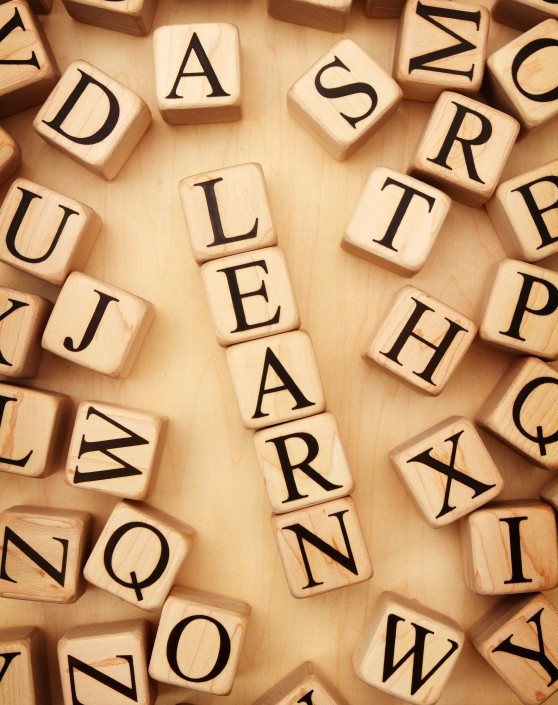 Words, words, words!
Words, words, words!